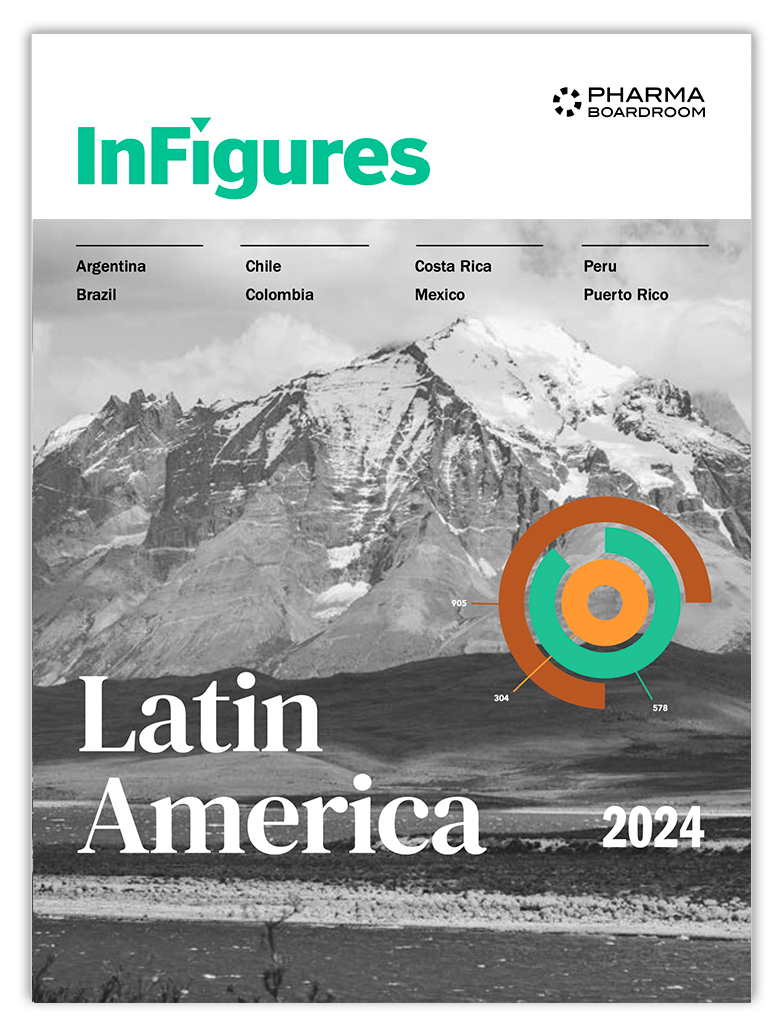Overall health indicators have improved significantly in Indonesia in recent years. However, the country still faces many challenges and there are many areas in need of further improvement. What is your assessment on how government policy is contributing toward improved health care in terms of current policies and priorities?
Indonesia’s health care system has been directed towards five goals. First, reduce Maternal Mortality Rate and Infant Mortality Rate. Second, provide quality health services for the poor. Third, make essential health workers available throughout the country. Fourth, control communicable diseases and reduce malnutrition. Fifth, maintain health services in remote places and country borders.
The government has set up a multi-tiered healthcare system, starting with a Health Post in every village, a Community Health Center in each sub-district level, a Hospital type C or D at the district level, and hospitals type B and A that available by referral. In some places, the health centers are supported by mobile clinics and/or sub health centers.
Besides those health facilities, there is also a well-known mechanism of community participation through the activity of Integrated Service Posts (Posyandu) focused on infant health monitoring, and building an alert village (Desa Siaga) with basic capacities for disease and disaster preparedness.
The Government has initiated four breakthrough programs designed to achieve these goals in a more systematic and committed fashion. The first program is known as P4K or Birth Preparedness and Complication Readiness (Program Perencanaan Persalinan dan Pencegahan Komplikasi). Under this program a midwife and the local community monitor the status of a pregnant woman intensively. The community shares the responsibility of preparing blood donors as well as vehicle to transport the pregnant woman to health facilities. A sticker is put on the wall of the pregnant woman’s house to convey relevant information.
The second program is Public Health Insurance, known as Jamkesmas (Jaminan Kesehatan Masyarakat). The government provides health insurance for the entire poor and near-poor population throughout Indonesia covering a total of 76.4 million individuals. There is no limitation of services covered by the insurance, and no cost-sharing required, as long as the patients stay in a third class hospital room. Each district local government determines the criteria and selection of a Jamkesmas recipient.
The third program includes Contracted Health Workers, known as PTT (Pegawai Tidak Tetap) as well as Competency-Based Medical Specialist Education, known as PPDS-BK (Pendidikan Dokter Spesialis Berbasis Kompetensi). The Government has committed significant resources in ensuring availability of qualified health workers throughout the country. It is the policy of the government to deploy contracted doctors, dentists and midwives to remote areas to maintain equity in the provision of health services. To fulfill the need of more specialist doctors, the government has allocated scholarships for 1,040 doctors to pursue specialization according to local needs.
The fourth program is a Family Nutrition Awareness campaign, known as Kadarzi (Keluarga Sadar Gizi). The campaign includes monthly growth monitoring promotion at an integrated service post (Posyandu), micronutrient supplementation such as high doses of vitamin A for children under five and iron tablets for pregnant mothers, early initiation of breastfeeding and exclusive breastfeeding for 6 months, the provision of iodine fortified salt, and the promotion of a balanced diet.
In addition to the Kadarzi campaign, the government has allocated subsidies to provide nutritionally beneficial food for the poor. This includes complementary meals for children aged 6 to 24 months, multiple micronutrient powder (Taburia) for children aged 12-59 months, and a school meal program for elementary school children at 6 provinces of eastern Indonesia. The government provides a Stimulus of IDR 300,000 per year for the operational cost of Posyandu. A total of IDR 75 Billion has been allocated for 250,000 Posyandu.
The government encourages community participation (community based nutrition surveillance) in finding, helping and bringing malnourished children below the age of five to health facilities. The rate of underweight and severe malnutrition among children under-five has declined from 25.8% in 2004 to 18.4% in 2007. This translates to a 30% reduction within three years and indicates significant improvement in nutritional status Note that the MDG’s target is to reduce the figure to 18,5% in year 2015. In 2009, a total of IDR 200 Billion has been allocated to the school meal program, feeding 2 million elementary school students.
“Healthy Indonesia 2010” is now at its final year of implementation. What have been the major achievements of this initiative and what challenges remain?
Healthy Indonesia 2010 is a vision for ideal healthcare conditions. The current health development was outlined in the Medium-term Plan of National Development for 2004-2009. There are four indicators with a 2009 target rate in the plan. The first target is an Infant Mortality Rate of 26 deaths per 1,000 births. The second target is a Maternal Mortality Rate of 226 deaths per 10,000 births. The third target is a Proportion of Malnutrition among Children under five of 20%, and fourth, a Life Expectancy of 70.6 years.
As of 2007, each of these indicators are already approaching or surpassing the target rates. Infant Mortality is at 26.9 per 1,000 births, Maternal Mortality is at 228 per 10,000 births, Malnutrition among children under-five is at 18.4%, and Life Expectancy is at 70.5 years. Thus projections indicate extremely an high probability of achieving all targets in 2009.
The Askeskin program has recently undergone significant changes. Can you please tell us what inspired those changes and how the new system has been designed to avoid some of the pitfalls experienced under Askeskin?
Askeskin (asuransi kesehatan masyarakat miskin) is the name of health insurance for the poor, a program that was launched in 2005. In 2008 the name was adjusted to Jamkesmas (Jaminan Kesehatan Masyarakat), reflecting certain changes in the mechanism of the program. This adjustment was done due to certain weakness that were found in the program. These issues included the fact that all targeted population had been covered, financial management for health provision and claim payment were executed by one body, lack of service quality and cost control in hospitals, poor management of the verification process, and delays in the payment of claims from hospitals.
Under the new mechanism of Jamkesmas, the fund is sent directly from the government treasury account to health service providers, and the verification procedure is done by an independent organization.
How does Indonesia’s on-going decentralization process affect the provision of healthcare services? Specifically how is containment of infectious diseases impacted?
Decentralization does in some cases work at cross-purposes to supporting health development. Following the Home Affairs Ministerial Regulation No. 13/2006, the Ministry of Health has released two decrees by No. 741/2008 concerning Minimum Service Standard (SPM = Standar Pelayanan Minimal) of Health services in districts and cities and the decree No. 828/2008 concerning Technical Implementation Direction (Juknis) on the SPM standard for districts and cities. By this SPM, the roles of Local Governments are clearly defined to provide health services for their communities.
In tackling the double burden of diseases, the MOH has some policies designed for handling and controlling communicable diseases including re-emerging and newly-emerging diseases, and non communicable diseases. Globally, as a member of the WHO, the MOH also implements International Health Regulation 2005 in Indonesia.
The Ministry has announced plans to have more efficient and effective healthcare spending. How are these changes being implemented?
Since 2005, the Ministry has implemented a strategic and breakthrough mechanism in its planning and budgeting system. Firstly, the entire executive team actively participated in describing the vision and mission of the institution. Under this united direction, the program was drafted, resulting in 17 targeted goals. Based on more general goals and the 17 targets, the annual plan and budget were developed. This is recognized as ‘integrated planning and budgeting”. Under this comprehensive and integrated process, the budget has been allocated efficiently and effectively. The unit cost for each item and activity was also carefully determined. There is overlap or irrational unit costs have been eliminated. This mechanism has resulted in significant savings of health spending and better allocation of priority programs.
The HIV/AIDS pandemic has ravaged the healthcare systems of many countries worldwide. While not one of the worst hit by the HIV/AIDS wave, Indonesia has not escaped being touched by the disease. With is the MOH’s action plan and commitment to combat HIV/AIDS?
The Coordinating Minister of People’s Welfare is organizing the combat against HIV/AIDS nationwide. A Commission for AIDS Control has been established and tasked to raise the awareness and commitment of all stakeholders in combating HIV/AIDS.
The Ministry of Health has mainly focused on health treatment of people with HIV/AIDS. The HIV/AIDS program of the Ministry includes increasing access to counseling, testing and treatment at the hospitals and health centers, encouraging rational drug use to prevent drug resistance, and increasing anti-retroviral therapy at first line of health services.
Ensuring access to medication for a broad segment of the population is a major stated goal of the MOH. What is the contribution of state-owned pharmaceutical companies in spreading access to these medications?
State-owned pharmaceutical companies have been working hand in hand with the Ministry in providing drugs and other pharmaceutical substances that are affordable and available all over the country.
The government provides vaccines for all individuals through this state-owned production company, with costs determined by the government. Meanwhile, the government collaborates with foreign pharmaceutical companies to provide vaccines that are not produced in country.
Could you please describe various scenarios in which government and the pharmaceutical industry could cooperate together to raise awareness of preventable diseases?
Since the establishment of current Cabinet, the government has held a strong commitment to provide quality and affordable drugs for all people. In 2006, the government issued regulation to control the price and labeling of generic drugs. Under this regulation, pharmaceutical companies are obliged to sell generic drugs within the determined price and to label drugs in the proscribed correct manner.
Since the start of the economic crisis in 2008, the government has committed to subsidize the cost of generic drugs to prevent price escalation in 2009.
Drugs import from overseas are not prohibited, as long as they come in a pure form, within the downstream system, or under license. The old practice of importing drugs through the pharmaceutical trading group is not legal since the group is not an authorized body under Indonesian law.
The government has also encouraged more widespread and affordable drugs, especially for poor people, by adjusting requirements and facilitating the establishment of “communal pharmacies” in some provinces. Other initiatives include facilitating the availability of cheap and high quality OTC, and creating price protection and subsidies for life saving, essential and government program drugs.







